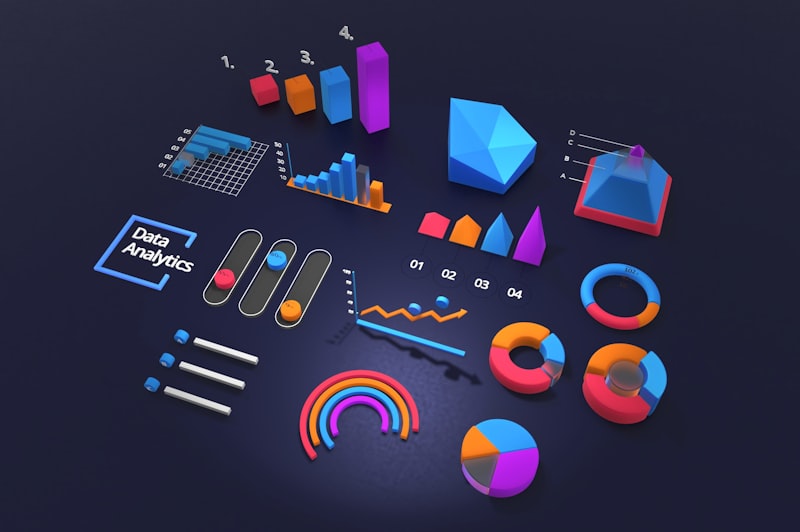Marketing is how you convince your customers that your product or service is the best option for them. How you market to those customers, however, is constantly changing. SaaS marketing has become increasingly data-driven in recent years. This shift towards using data to drive marketing strategies can be challenging for some companies, but a better understanding of how to use data will help as you prepare to make this transition.
How data can drive effective SaaS marketing
You're missing out if you haven't used data enough in your SaaS marketing. Data is the new currency of business and can be used to improve all areas of your business—including marketing, sales, customer service, and product development.
Data can also be used to improve the customer experience by helping you understand how customers interact with your brand. You can use this information to ensure that every interaction is seamless and efficient so that they have a great experience every time they interact with your company.
How much data should be used?
The answer is simple: use as much data as you can. The more data you have, the better your product will be and the more sales you will make. Data isn't just for marketing, sales, or product teams—it should be used by everyone at your company to make decisions about how they do their jobs and what they focus on.
That said, there is one caveat: use only actionable insights from your analysis of the data. You want to avoid using insights that are so general that they don't help improve your business in any way. Actionable insights can include anything from identifying where people drop off in a funnel (and why) to identifying which features are most important for customers who already know about them but haven't purchased yet (so you can target them specifically).
Who should take the lead in data-driven marketing?
Data science is a team sport, and everyone on your SaaS marketing team should be involved in data.
This includes your:
- Customer success team. Data science can help customer success teams make better decisions about what to do for customers struggling or churning out of your product. It's also great for identifying trends across all your users so you can see when someone's behavior changes or if it matches an industry trend.
- Product development team. The product team can ask questions about the effectiveness of different features, spot bugs before they happen, and even predict how certain changes will affect future conversions based on past experience with similar situations.
- Sales team—yep! The sales department needs accurate information about their leads to qualify them effectively and close deals faster than ever.
What are the challenges to SaaS companies' effective transition to data-driven marketing?
There are many challenges to making an effective transition to data-driven marketing. Chief among them is that most SaaS companies don't have the organizational structure or the resources necessary for effective data-driven marketing, especially if they're not already using data in their sales funnel.
Another challenge is that few marketers have extensive experience working with data. This inexperience can lead to missteps, making it difficult to know whether your efforts are producing results and improving your bottom line.
Other factors that may be limiting your ability to use data effectively include a lack of time or money; a lack of access to valuable tools; a lack of commitment from the management; knowledge gaps on what types of information should be collected, who should own it (and how), etc.; understanding how best practices might differ from company-to-company based on industry/business type; motivation (or lack thereof) when faced with uncertain ROI figures.
What types of data will you need?
Your first step is to determine what data you need. It will depend on your business and its goals. Here are some examples:
- Data about your product. You'll want to know how many people use it, how they're using it, and whether they're happy with it or not.
- Data about your customers. You'll want to know who they are (demographics), how they came across you (sales channels), what they bought when they did come across you (product purchases).
- Data about your competitors' products — so that you can better understand the market dynamics around yours and make intelligent product decisions accordingly.
- Data about marketing campaigns — so that you can optimize them over time based on performance metrics like click-through rate or conversion rate from visitors into leads/customers etc.
How do you compile and analyze that data?
You're not just a SaaS company. You're also a data company. And what's great about that is that you have access to more information than ever before, and it can help you understand your customers, your marketing, your product, your sales, the customer experience, and so much more.
To start using data to make intelligent decisions in all areas of marketing—from lead generation to email campaigns—here are some quick tips:
- Set up an analytics platform (like Amplitude, Heap, etc.) that provides insights into how people use your app or website (and other digital properties). You want this platform to be easy for everyone on the team to use so they can see where users are coming from and what content they find most valuable.
- Get in touch with a professional who can help set up dashboards for each department based on business goals—including KPIs such as revenue targets for each stage of the sales process or signup rates for specific email campaigns.
Data is the result of your company doing business. Your customers pay you money (or don't), they come to your website, they download your product or service. All of these events are recorded and stored in a database somewhere. And when you look at all those events together, you can start to see patterns emerge.
The most basic pattern is the funnel: where are people coming from? What channels do they use? How many people convert at each stage? At which point do they drop off and why? Where are the sales being made?
These questions aren't always easy to answer because there's so much information available that it becomes hard to know where to begin with analysis. And while there might be hundreds or thousands of customers who fit into some kind of category within one specific segment, it won't tell us anything about how we can improve our marketing campaigns going forward unless we have a way of analyzing those results by looking at them through different lenses.
We've covered some ground here, but it's important to remember that data is only as valuable as the actions you take with it. If you want to drive effective marketing for your SaaS company, you will need the right data—and an action plan for how to use it. But don't forget: "data-driven" doesn't mean "robot-driven." Remember that marketing is still an art; numbers and graphs can help us get closer to our goals, but they have no power without human creativity and passion bringing them together into a cohesive whole.



